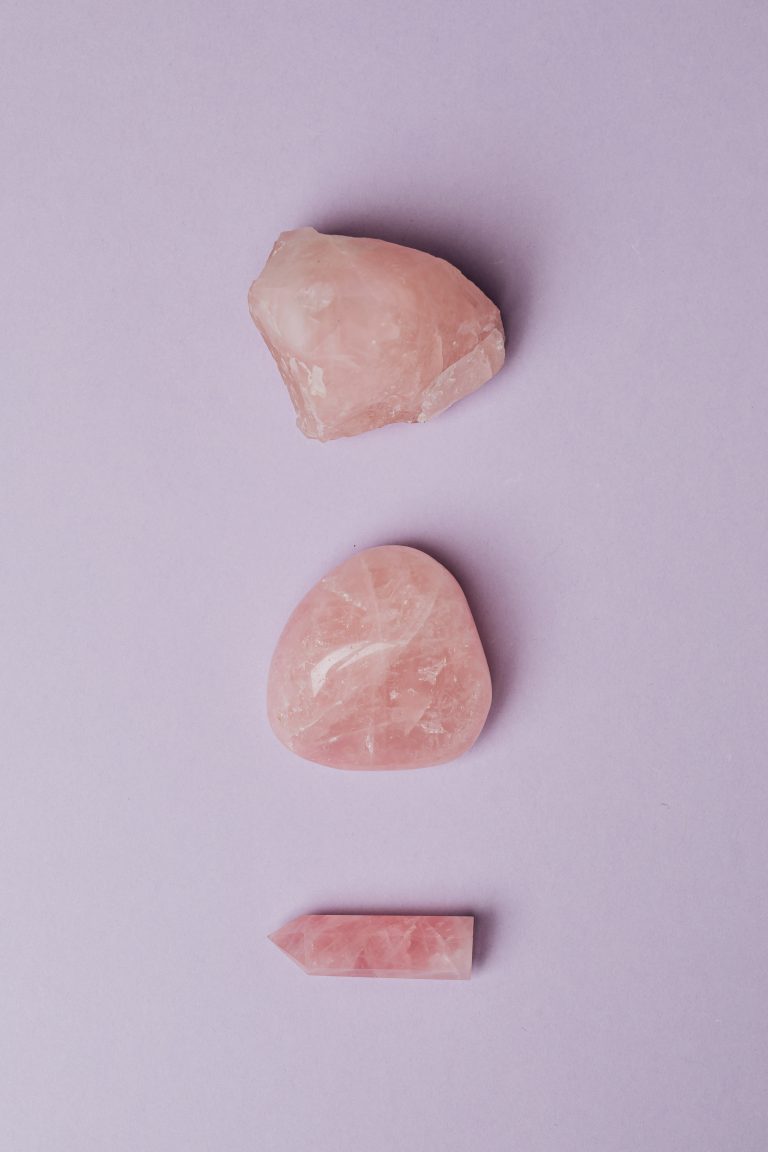Introduction
In this article, we are going to discuss the importance of investing in sustainable raw materials for your jewellery business.
Gemstones are natural beauties used in jewellery designs and are found like treasure hunts. Expertise, time, and equipment are needed to complete the harmful extraction processes on the surface or underground. With the number of sustainable businesses out there, you may be considering making your jewellery business sustainable. When it comes to sustainability in business, companies are transparent about their processes, minimize their environmental footprint, and watch the effect their business has on the environment to make a positive impact. Sustainability is important in the present so the future generations can still meet needs. It can be difficult to find raw materials, like gemstones, that are eco-friendly and do not cause any kind of controversy that is associated with blood diamonds. Here are some details on selecting sustainable gemstones and other eco-friendly material alternatives.
In this post we’re going to discuss:
- Mining Effects and Why You Should Choose an Alternative
- Selecting Your Sustainable Gemstones
- Eco-Friendly Jewellery Material Substitutes
- Conclusions
1. Mining Effects and Why You Should Choose an Alternative
Sustainable raw materials are sourced, mined, and processed without threatening the community it is from. Raw materials, like gemstones and precious metals, are the backbone for most jewellery designs. Mining for these resources takes a toll on the environment. Laws are in place to help regulate mining, but it is still destructive to the surrounding areas.
The size of mining and methods used will determine the impact but generally, the land is damaged from tree removal, and wildlife is left to suffer. If there is not proper disposal of toxic waste, nearby air and water pollution can occur. To help narrow down the gemstones and additional materials you select based on sustainability, you must know the types of mining.
- Artisanal Mining and Small-Scale Mining (SSM). This type of mining takes place on the surface. Gemstones are usually handpicked by a small group of workers, by explosives or panning. Workers move from site to site without worrying about rehabilitation when completed. Mine sites are left bare, uncovered and exposed to erosion. Not as many gemstones are collected, due to the small labor size. Because there is little to no machinery required, the pollution levels are relatively low. The work is highly disorganized when it relates to planning because no company is present.
- Large-Scale Mining (LSM). Several workers are involved with the extraction process at one or two above ground and underground sites, and a large company is usually in control. The process is not as labor intensive because there are advanced tools, electricity and pumping used. Because machinery is dependent on fossil fuels, there is high carbon output in the environment. Large pieces of stone are removed to extract gemstones, leading to harmful byproducts. This method is likely to contaminate drinking water with the large outputs. With more regulations in place, sites are more likely to be reforested when mining is complete.
The big three jewels, Ruby, Sapphire, and Emerald, are always stars of the show that have made the top of the gemstone list for years. Consumers value these precious stones for their elegance, rarity, durability and intense, rich colors. A lot of time and effort goes into mining these gems, and can be extremely hard to find, at times. Though the impacts for mining vary based on the techniques used, the process is similar for most gemstones.
In addition to gemstone mining, metal mining can be destructive to the surrounding areas. Gold, in particular, is one of the most pollution-causing metals when extracted. The byproduct is full of toxic metals, leaving a dirty mess if not properly disposed of.
When deciding upon your raw materials, you may want to do without out these materials. In the next section, we will discuss selecting gemstones that do not have much of a lasting impact on the environment.
2. Selecting Your Sustainable Gemstones
Gemstones are natural beauties that are cherished by many in jewellery designs. You may not want to completely give up using gemstones in your pieces, and there can be a way to do that while being cautious. If you are looking to get serious about your jewellery business’ sustainability, here are some things to look for when selecting environmentally friendly gemstones.
- Extraction Methods. Look into how each type of gemstone is extracted. The type of method can vary by stone and company, so you can select the stones that are mined using more green processes. There are two main types of mining: surface and underground. For surface mining, open pit mining and mountaintop removal require dynamite that blows away rocks. For underground mining, water, dynamite, and drills are frequently used to break down the rocks. One of the most sustainable methods has to be river panning, where gemstones are gathered from sources of water within the vicinity of the mining area. One of the most harmful methods is open pit due to the high risk of dust particles in the air.
- Restoration Efforts. Invest in mining companies that will work to restore the land destruction resulting from extraction. With most mining, vegetation is cleared, and rocks are removed, leaving empty land that is vulnerable to soil erosion when the process is completed. Rehabilitation is essential so the area can be repurposed and does not further degrade.
- Look into man-made stones that are still valuable and attractive. One of the most valued gemstones, diamonds, are frequently used in ring, earring, necklace, and bracelet designs because of the endless shimmer. They may be known as a “girl’s best friend,” but the process for mining says otherwise. Consider lab grown diamonds, as an alternative. The labs use a fraction of the energy that mines use. These diamonds do have the same chemical properties as natural diamonds, but there is no mining process involved. Other gemstones, including the big three jewels and so many more are available from labs as well. Hearing these gemstones are synthetic may turn you away and think they are low-quality. This is not the case, as they will save you money, come with fewer flaws, and leave a much smaller carbon footprint. These gemstones may not have taken millions or billions of natural years to be formed by the Earth, but they are still durable and beautiful.
If you are not directly sourcing gemstones from the mine, invest in a supplier that has done their research with the background of each stone. Finding a sustainable, transparent source will take time and will require investigation. The cost will be worth it, if you are willing to put in the effort.
Material sourcing can be difficult when it comes to finding high-quality, affordable and sustainable materials, and it does require skill to find sources. It is important to consider these things when looking for resources that will not leave a significant negative impact on the environment. If you decide to forgo using natural gemstones, there are other options that are sustainable and can give you the gemstone look. These will be discussed in the next section.
3. Eco-friendly Jewellery Substitutes
How do you make jewellery eco-friendly? One thing to consider is using sustainable materials. A number of jewelers use environmentally friendly materials to create a unique design. Some examples of materials include natural clay, wood, sea glass, and cork to replace gemstones and even leather. Below we are going to discuss each one.
- Clay. When it comes to clay, you can create the look of a stone. Clay dates back to ancient times and is used in so many other aspects besides jewellery. In fact, recently clay earrings have seen a spike in demand. One added benefit is the simplicity of clay. It is simply molded into the desired shape and heated in an oven or from the sun to harden and dry. You are given the freedom to shape your own beads and pendants. It is easy to customize designs and add various textures and patterns by pressing stencils into the wet clay. Several colors and paints can be added to mimic the look of natural gemstones and even metals. For an added shine, you can finish them off with polish. These pendants may not be exactly like metals or stones when it comes to weight and density, but they will look similar, be sustainable, and remain durable.
- Wood. You may question how using wood in your designs can be sustainable when it requires cutting down trees. In fact, wood can be cut from naturally fallen trees or taken from thrown away pieces of furniture. It can be smoothed and cut into various shapes and later can be stained and polished and painted and carved. The possibilities are endless with this lightweight material. Similar to clay, these can be made to have the same look as gemstones, if paint is applied. Not only will your pieces be eco-friendly, but each will come with a unique story of where the wood is from and it will come from a renewable source.
- Sea Glass. If you are looking to create pieces with the look of frosted gems, sea glass can be for your next jewellery designs. Sea glass washes up on the ocean shore and is made naturally from pieces of broken glass that tumbles in the ocean. It takes years of nature’s work to transform broken, jagged glass from bottles and shipwrecks into sea glass. The tumbling action from the waves gives the glass a smooth, frosted look. Shapes and sizes vary from large and round to small and oval. Although this material exists from a non-eco-friendly activity, the byproducts can be used to create beautiful, calming jewellery pieces. Just like wood, sea glass can have a unique story behind its creation.
- Cork. Leather is strong and durable for jewellery designs and can last a lifetime. Although, leather is an extremely polluting industry with massive amounts of chemicals, oils and dyes that can leak into water sources. An alternative, cork, is harvested from the bark of cork oak trees, so no trees are harmed in the process. This is an eco-friendly material that is natural, renewable and even recyclable. Cork can be an alternative to metal chains or leather in bracelets and necklaces or can be constructed into pendants and earrings. Another option is adding your own clay beads to cork cord. Using cork will give your designs a unique look that is similar to leather but more sustainable.
Look into repurposing or recycling materials to ensure nothing goes to waste. There are so many materials that can be recycled. From metals to bottle caps, and plastics, you can use these recycled materials and shape them into pendants. Instead of purchasing new spools of metal chain, use antique chain or recycled metals instead. When it comes to recycled metal chain, these metals are not dirty, tarnished pieces of metal. They are scrap pieces of metal that are melted down and remade into shiny, new pieces. This eliminates the energy involved with extracting precious metals and is a cheaper alternative. Another option are glass beads. Similar to the sea glass found in the ocean, these are made from recycled glass.
You may be thinking these natural materials do not match current trends or styles in your jewellery business. You may also be thinking these materials can look tacky and cheap, but after putting careful thought and hard work into creating them, you can make impressive, eye-catching pieces. Large pendant necklaces might not interest you or your customers because of the boldness that comes along with them. Making earrings out of these materials will be more subtle. Carrying out a new line that is eco-friendly is a way to start reshaping your business. Just think, you will not be adding to the problem when using these materials.

4. Conclusions
Sustainability is not just for green companies and can be used in any industry. Gemstone mining processes negatively affect the environment and leave land desolate. Some gemstones are crowd favorites and continue to be admired, but you do not have to completely give up these valued gemstones to be eco-friendly. Instead, pick man-made gemstones that are high-grade and made with the same physical composition as natural gemstones. Replace existing jewellery designs with eco-friendly materials that can look like gemstones. It is possible to change your brand identity and focus on sustainability, if you take the time. Customers are caring more about the origin of their products and will appreciate your business effort in becoming sustainable and helping the environment. Who knows, you may start a new jewellery trend with your unique designs.
If you’re looking for an opportunity to deepen your understanding and knowledge of the practices of sustainable fashion, don’t hesitate to take a look at our course “The Sustainable Fashion Industry“. Our short and to-the-point, online class covers a wide range of topics spanning from sustainable business models to strategies to lower your carbon footprint. Here’s a link to the course, if you use the discount code BLOG20 at checkout you can access a 20% discount. Enjoy!








